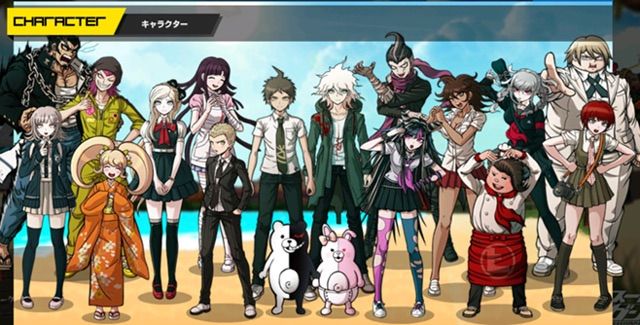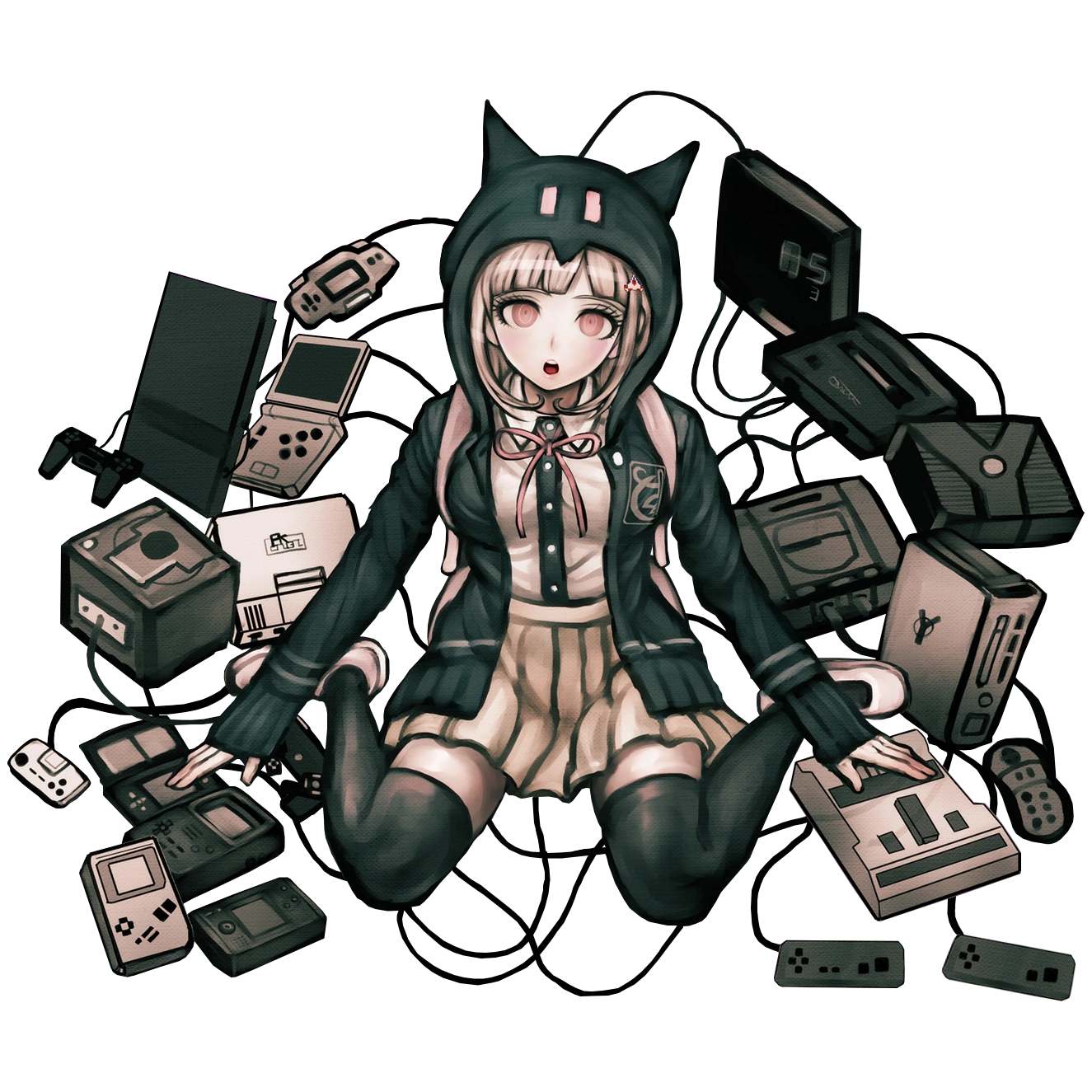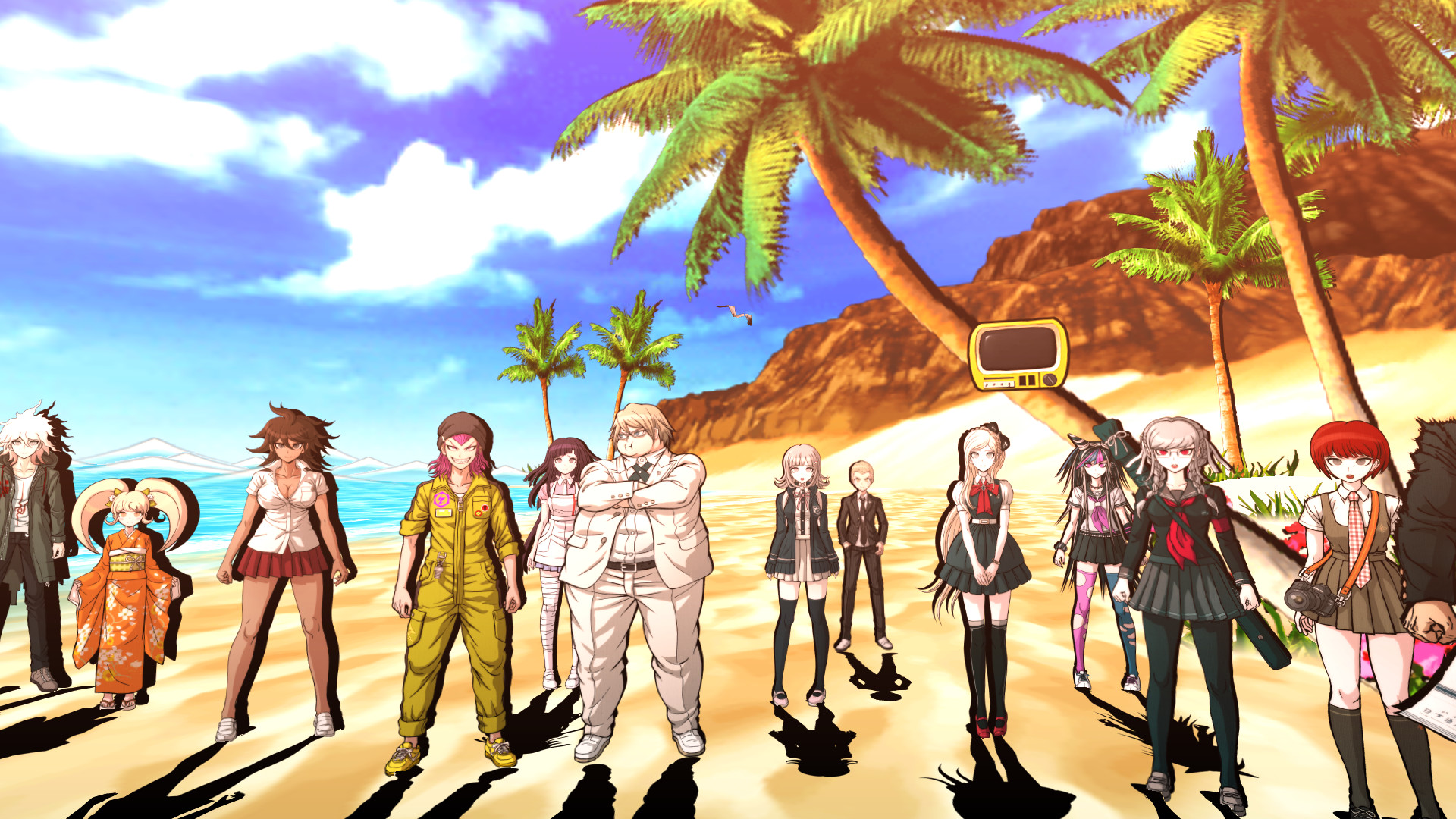Fair warning: I will cover some spoilers of the first game, so I’d recommend you either play that first or at least watch some YouTube videos that cover the things I’ll talk about here.

The colorful cast of characters count one higher than the first game with 16 students, eight boys and eight girls. It’s important that you play the first game before this one as there are tons of allusions of the previous game. Makoto Naegi, the protagonist in the first game, didn’t really leave an impact on the story or have much of a personality, which weakened him as a character to associate with for the entirety of the game. Hajime Hinata not only is much more animated as a character, but also has a really interesting mystery to him. For one, he has no Ultimate Talent he could recall of, whereas the rest of the cast can easily remember it. He also houses the ability to summon answers from the most difficult questions via mini-games during class trial. Nagito Komaeda, the first person you meet on Jabberwock Island (the setting of the game), loses his mind after the first case and becomes some sort of massive trickster that fools the cast during the class trials.

Chiaki Nanami, the Ultimate Gamer, instantaneously becomes the most helpful contributor during the class trials and brings logic into the most despairing moments of the class. She also happens to be the best character in the game due to the close relationship you develop with her throughout the story, the fact that she’s a gamer who suddenly sleeps a lot., and is also one of the most important characters to the story, so definitely pay attention to scenes with her in it. Did I also mention she’s the best? Yeah, she’s the best. She deserves her own game like Toko Fukawa, by the way. Anyway, moving on.
Other characters in the ensemble include Peko Pekoyama, the Ultimate Swordswoman; Mikan Tsumiki, the Ultimate Nurse; Fuyuhiko Kuzuryu, the Ultimate Yakuza, and no he doesn’t have 18 games based on him. Nearly all characters have a remarkable twist to them and they leave a massive impact onto the story. My only gripe is that some characters have no ulterior motives waiting to be unveiled, such as Sonia Nevermind, who’s a foreign exchange student and a literal princess of her own European kingdom. There’s so much you could do with that character and it’s a shame the story kept her and Kazuichi Soda in a never-to-be romance. However, there are some funny moments between them.
During the second chapter, a handful of female characters come into a diner wearing rather revealing bikinis, making the male characters swoon. Soda was hoping that Nevermind was going to be in a similarly attractive outfit, but she arrives in a very concealing diver suit. Thankfully, Soda was happy her clothes were skin-tight. One cool thing I like about the class trials in DR2 is that a lot of what characters say is documented during trial debates. No longer are there random pieces of evidence that spring up in an attempt to spice things up during the class trials. As a result of more natural sources of information, the debates feel more organic and sometimes draw similarities to Twelve Angry Men when an outrageous argument gradually becomes logical and shifts the quarrel between the surviving students. Expect the unexpected when it comes to finding out who the murderer is.
Similarly to the predecessor, the class trials end by a brief exchange with the killer and why he or she decided to brutally murder the victim. Most of the time their motivations behind their actions causes you to sympathize with the killer and understand them better. Sometimes the death of a student devastates another and permanently scars them for the rest of the game. Unknown relationships and histories reveal themselves at the conclusion and it often pains to see them be executed by Monokuma. The story effectively immortalizes the dead with Hajime and his peers longing to see the lost ones again and pondering what they would do in certain situations they encounter. These characters feel so much more alive and some tragic moments that occur can linger in your mind. Of course, it wouldn’t make you cry, but Danganronpa 2 manages to leave a formidable impact on someone who’s engaged in the story, and that alone is an achievement in a game’s narrative.

As far as visual novels go, Danganronpa continues the tradition of being the more gameplay-oriented series in the genre, especially during class trials. There are several new mini-games in class trials. My personal favorite of which being Logic Dives, where a Hajime figure snowboards through a tunnel avoiding obstacles and pit while answering some quizzing questions. Hangman’s Gambit has underwent a facelift, now letting the player combine matching letters and shooting it into the blank spaces. This mode can be a little too long when mismatching letters keep colliding and the cursor moves too slowly to prevent the collision. I would say that would be my least favorite mini-game if it not were for Rebuttal Showdowns.
On a Dualshock 4, the controls are not that intuitive at all, with the analog stick acting as the sword that cuts through statements. That’s also ignoring the fact that you have limited arsenal, and when you miss one too many, you’re shit out of luck. Looking for the right Truth Blade that cuts through the contradiction is also a little flimsy as you have to juggle with the left and right bumpers and keep slashing through the statements. Ultimately, I prefer Nonstop Debates, which have some additional twists. For one, you always have a fully loaded gun with six Truth Bullets, instead of starting out with one and then slowly building up to six. Perhaps this is due to Spike Chunsoft relying on players being familiar to the game’s mechanics. You can also agree to some statements, creating a Consent reaction instead of a Counter. I’m surprised no one made any sex jokes from that. They work the same way as finding contradictions, but it’s nice to see the debates feel more genuine.
I seriously want to discuss the music because it is so freaking good in DR2. It’s the same composer as the last game, Masafumi Takada, and while the soundtrack recycles some old songs, the overall intensity and absurdity in the melody is still very present. They’re long enough to not sound too repetitive and catchy enough for you to sit around to embrace the jam. This is definitely music I would place in my top placement lists. Even though some tracks play a lot more frequently than others, I never get tired of them. The percussive nature of during intense moments and the somber atmosphere of tragic outcomes are beautifully orchestrated into the music. They perfectly fit the emotion of the narrative and amplify the sudden revelations. Also the songs that play during the Executions are all quite good. I’d definitely put this on a YouTube playlist during study sessions.

As this is a visual novel, the writing is key to maintain an enjoyable gaming experience, and Danganronpa 2 significantly improved from the predecessor. Most of the characters have their own mysteries waiting to be uncovered. Talking to characters gives you an insight into their own struggles and history (prior to their memory being wiped). Each time a case ends, a new island is opened up, which becomes the setting of the next murder. The new locations you find each serve a purpose and even the tiniest details become the largest revelations during Class Trials. Monokuma of course adds some spice by adding motives to encourage more killings, just like the previous ones. Without spoiling too much, there is some sort of pattern behind each killings in that it reflects those of Trigger Happy Havoc. However, the game does away with that retreading and gives an incredible climactic final case.
The fifth and sixth case deliver such a transformative twist in the game. When the game revealed the victim in the fifth case, my jaw hit the floor. A big gripe I had with the first game is that it threw too much at you in regards to the story in the final case, thus leaving a lot of open gaps in the narrative. Thankfully, not only does the sixth case clearly answer every new revelation it hurls at you in a very long cutscene, but it also clears up previous questions from the last game. The English voice cast truly shine in the final Class Trial, especially Johnny Yong Bosch (a very familiar name to anime fans) who voiced Hajime Hinata. The English voice cast in general did an excellent job. Christine Marie Cabanos (Chiaki), Wendee Lee (Akane), Kotono Mitsuishi (Peko Pekoyama), Brian Beacock (reprising his role as Monokuma), Chris Tergliafera (Gundham Tanaka), and Erin Fitzgerald (name redacted due to spoilers) all perfectly fit their characters and their talent is very recognizable in the anime world.
While Danganronpa 2 is substantially longer than the predecessor, making it over the 30 hour mark, I didn’t feel like it overstayed its welcome. In fact, I wanted it to keep going. You can continue to communicate with the cast after you beat it in Island Life mode and learn more about what the hell happened with the ending in a short novel you can read, but Danganronpa 2 did more than have some neat ideas, it established an overarching universe. Recurring allies and enemies and new entities and organizations help give the story and lore much needed depth, unlike Trigger Happy Havoc having a “the world sucks, man” message. Danganronpa ultimately evolved into a franchise I want to learn more about.

There is so much more I can gush about in Goodbye Despair. The character designs, the improved visuals, the wealth of content and rewards of completionism, the meta-humor and fourth-wall shattering, a plot that uses nonsense to say something intelligent. Visual novel game enthusiasts would say Steins;Gate (another Spike Chunsoft game) and 428: Shibuya Scramble are superior games than Danganronpa, but it’s hard for me to ignore the quality of the Danganronpa series from the first two games. I love the characters, the villains, the music, the themes, the art style, and the strong following the series garnered when it reached the West. I’m happy to be joining the ride and hope to see a fourth entry in the series soon.


Leave a Reply